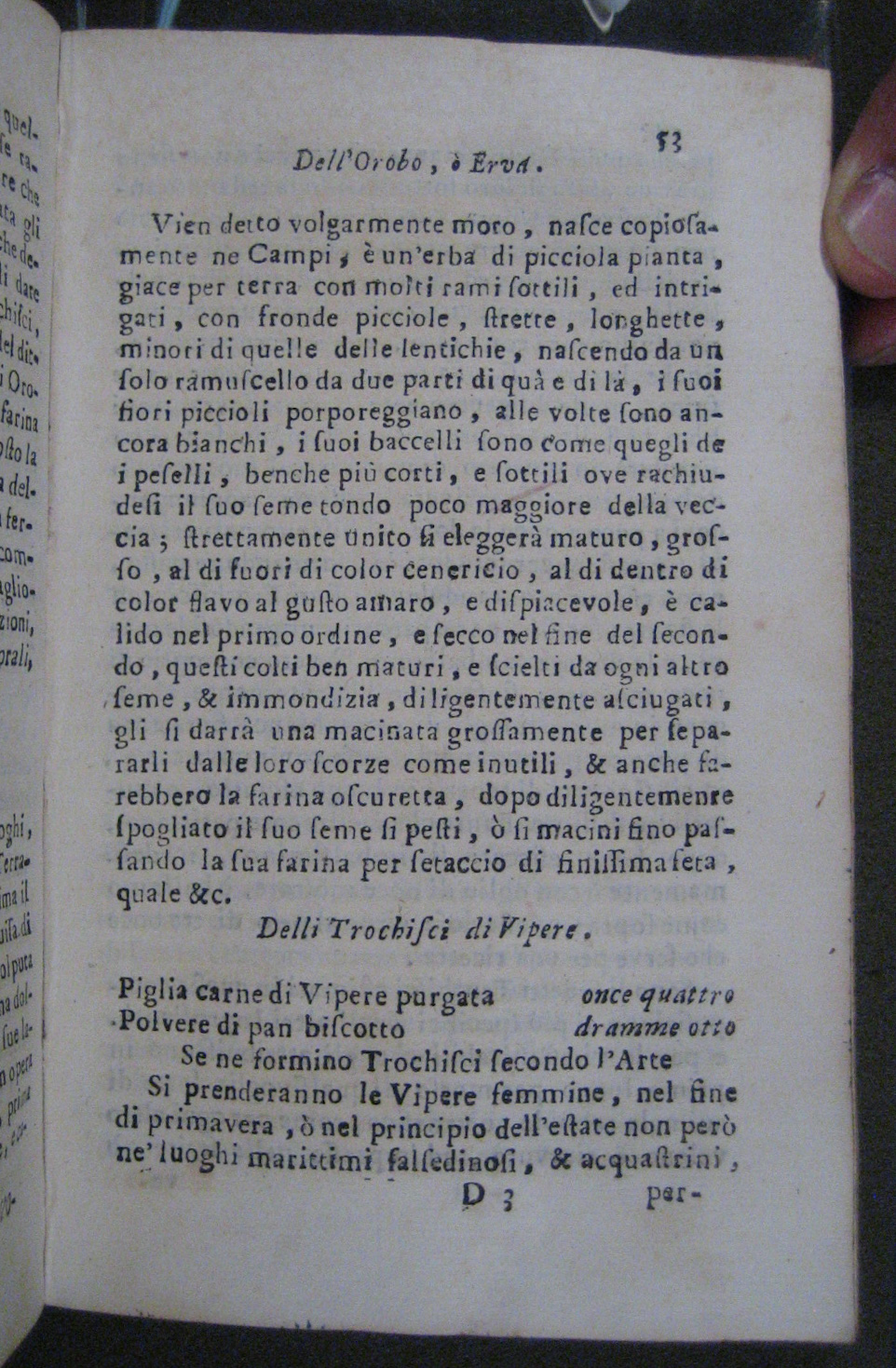



The development of toxicology as a discipline based on the direct observation and analysis of actual cases, with a body of literature independent from the ancient heritage, transformed the status of the classical works in the field. Instead of being consulted and used by physicians, as in the Renaissance, ancient texts became objects of philological and historical studies. Notwithstanding, formulae for theriacs and other similar panaceas dating back to Classical Antiquity continued to be reproduced, studied, improved and prepared in the apothecaries. Their multiple ingredients, including snakes and other poisonous substances, were even the object of exceptional attention to guarantee their authenticity and quality. They were exposed to the public so that they could be inspected and tested before the preparation of any medicine. The question was no longer their correct identification, as in Leoniceno’s time, but possible adulterations by unscrupulous drug providers. Theriaca, Mithridata, Diascordion, and other medicines named after ancient physicians were prepared under strict surveillance and in great quantity so as to satisfy the demand for one year. Even if new works were written in the vernacular, Greek names of medicines were preserved as they gave a pedigree to such medicines and even to the works that described them.
I + 80 + I ff., 200 x 150 mm., a4, A4-G4, H5, I3. Vicenza, Domenico Amadio, 1613.
Italian and Latin.
UCLA Young Research Libray, Special Collections, Ahmanson-Murphy Room, Aldine: SCB 152864 ALD
UCLA copy is bound with Elogia in Theriacam.
Very little is known about Michelangelo Angelico (17th century [?]), probably from Vicenza as he identified as Vicentino. He studied Galen and wrote in both Italian and Latin.
[JFC]



92+I ff., 169 × 106 mm, *2, A–L4. Rome, Jan Jakub Komárek, 1715.
Italian. Full-page layout. Headings in italic, body text in roman. Some printed ornaments.
UCLA Louise M. Darling Bio-medical Library, Special Collections, Rare: WZ 260 G348i 1715
No biographical information found for Gigani Rinaldo.
[JM]


Contribution date: February 2016